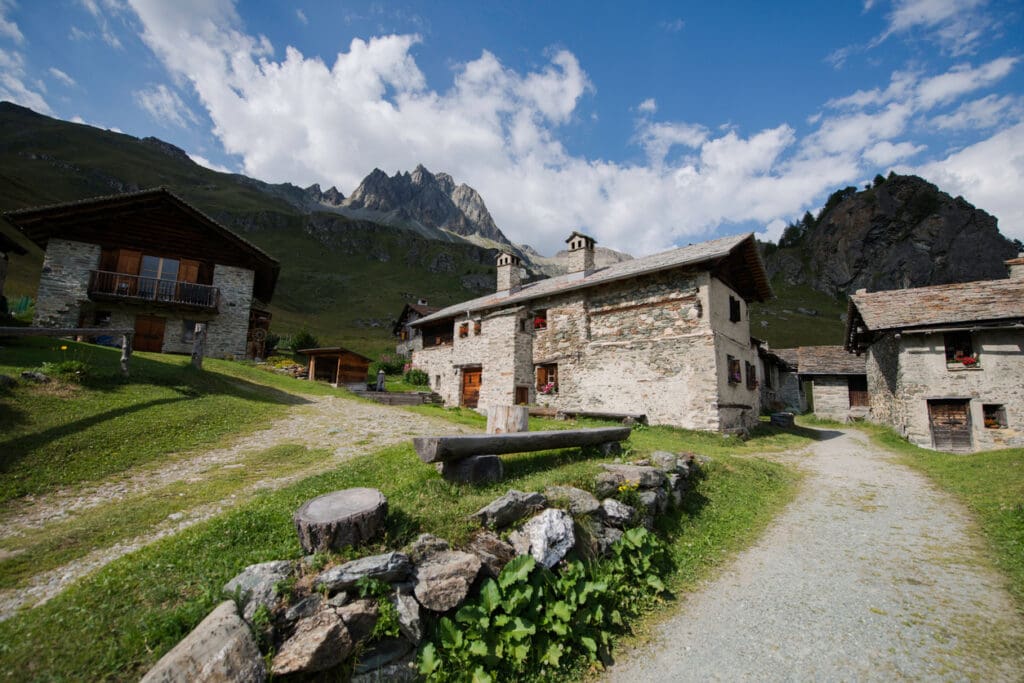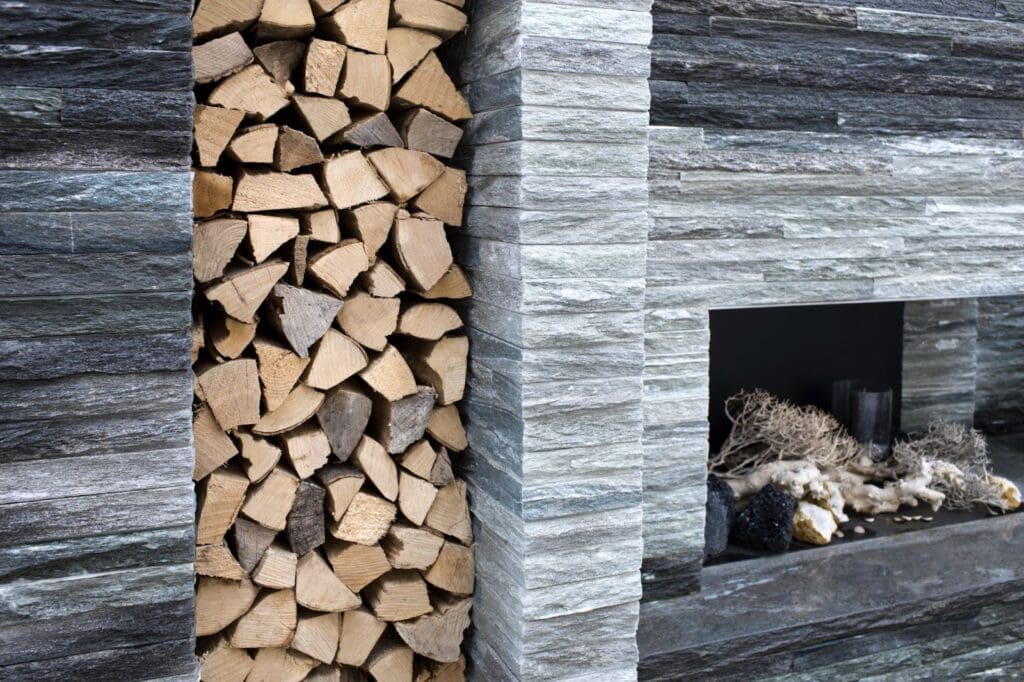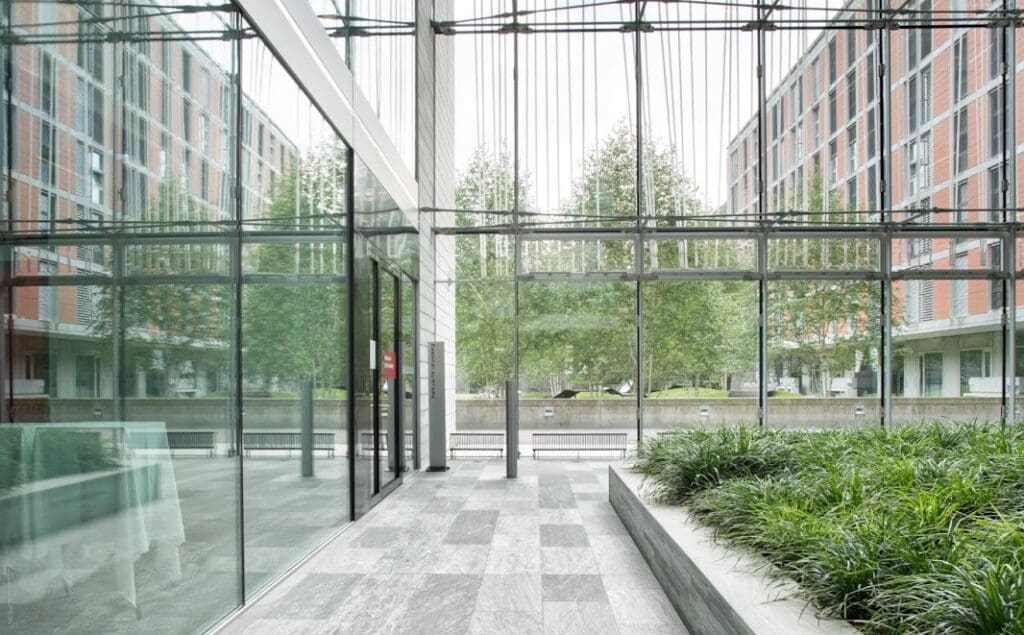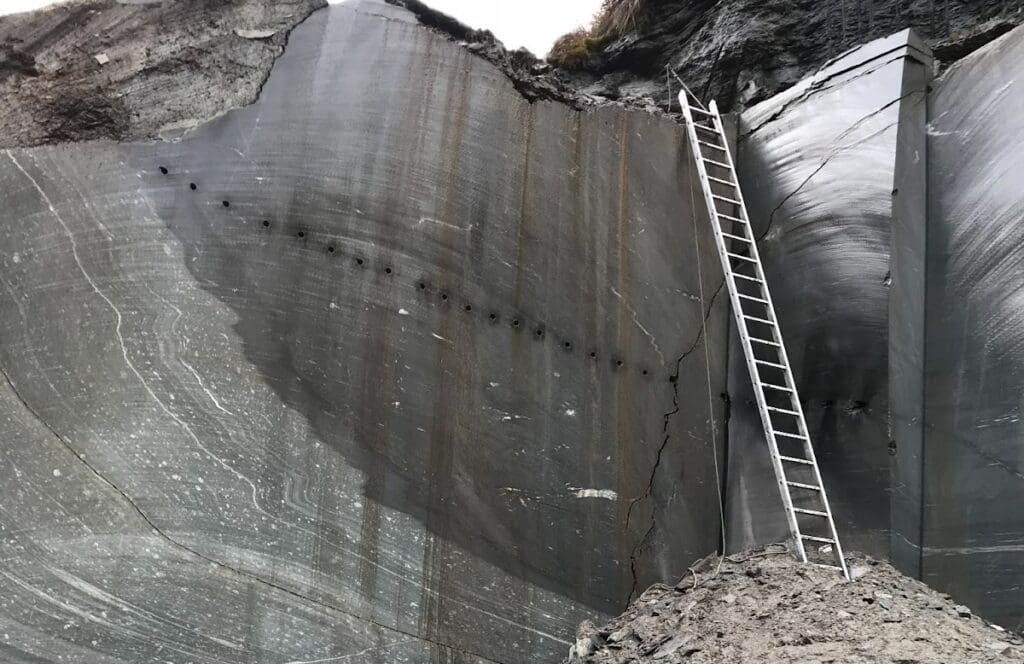Building with History: The Story and Legacy of Vals Quartzite in Modern Architecture
A Stone Born of the Swiss Alps
In the Vals Valley of Switzerland, deep in the Swiss Alps, lies one of the world’s most treasured natural building materials — Vals Quartzite. The village of Vals, renowned for its thermal baths and rich traditions, has a long historical connection to this unique stone, which has been quarried and used locally for generations. Known locally as Valser Quartzite or simply Vals stone, this mica-rich quartzite is prized for its distinct fine-veined texture, soft neutral tones, and ability to blend seamlessly with the surrounding landscape. The stone’s composition features prominent layers, contributing to its remarkable strength and unique visual appeal. It also challenges carving and shaping the material for custom architectural and design elements. Its natural beauty and exceptional durability have made it a choice material for historic preservation and modern architecture, capturing the region’s spirit by reflecting the Vals landscape’s unique essence and character.
The History of Vals Quartzite

Vals Quartzite’s history stretches back centuries. Villagers used the stone for roofs, walls, and paving, recognizing its ability to withstand frost, wind, and heat. The stone was carefully embedded in these structures, becoming the foundation of alpine buildings that have endured for generations.
The stone’s global reputation leaped with Peter Zumthor’s iconic works, most famously the Thermal Baths in Vals. Zumthor’s design showcased the stone’s white veining, grey hues, and textural depth, proving its versatility in public spaces and intimate interior environments. New architectural forms were created through innovative use of Vals Quartzite, highlighting the craftsmanship and deliberate design process involved. A notable example is a house project that exemplifies climate-responsive architecture. ValsQuartzite harmonizes the building with its urban surroundings and addresses environmental considerations through thoughtful material selection and integration.
Geographical Origin: The Heart of Vals
Nestled deep within the Swiss Alps, the Vals valley is the birthplace of one of the world’s most coveted architectural materials: Vals Quartzite. This remarkable mica quartzite is quarried exclusively from this remote region, where the interplay of geological forces over millions of years has given rise to its distinct fine-veined texture and elegant white veining. The valley’s dramatic landscape, shaped by ancient glaciers and elemental forces, is reflected in every layer of the stone, imbuing it with a natural beauty that is both subtle and striking.
The exclusivity of the Vals valley as the sole source of this quartzite has preserved its authenticity and ensured that each block carries the spirit of its alpine origins. The stone’s durability and resistance to harsh mountain weather have made it a prized material for architects and designers seeking to create projects that stand the test of time. From the iconic works of Peter Zumthor to contemporary architectural masterpieces, Vals Quartzite’s unique character and connection to the Swiss Alps continue to inspire and elevate modern architecture worldwide.
Architectural Significance: Why Vals Quartzite Matters
Vals Quartzite has earned its place as a cornerstone of modern architecture, celebrated for its harmonious blend of natural beauty, durability, and versatility. Its neutral tones—ranging from soft greys to subtle greenish hues—paired with its signature veining, allow architects to create spaces that are both timeless and deeply connected to their environment. The stone’s ability to reflect and absorb light, whether in a polished, honed, or sandblasted finish, adds depth and atmosphere to interiors and exteriors.
In iconic works such as the Therme Vals spa, Vals Quartzite demonstrates how a material can transcend mere function to become an essential element of architectural expression. Its thermal mass and resilience make it ideal for exterior walls, paving, and facades, while its refined texture brings sophistication to interior surfaces. By choosing Vals Quartzite, designers and architects can create buildings that endure and foster a profound connection with nature and the surrounding landscape. The enduring spirit of this stone continues to inspire innovative projects worldwide, ensuring its legacy in the world of architecture and design.
Vals Quartzite in Modern Architecture
Today, Vals’ Quartzite architecture is celebrated worldwide. Architects and designers use it to create spaces grounded in nature yet suited for contemporary life. Vals Quartzite is found in various buildings, from public spaces and city plazas to private residences and institutional buildings, thanks to its durability, safety, and aesthetic qualities. Its timeless appeal lies in:
- Durability—It withstands high-traffic public spaces, exterior façades, and demanding climates, qualities that are essential for both interior and exterior applications.
- Aesthetic Flexibility—The stone controls reflectivity and surface texture in polished, honed, or sandblasted finishes. Its style contributes to timeless design and enhances the visual impact of any project.
- Sustainability – Locally quarried by companies like Truffer AG, minimizing environmental impact.
- Material Integrity – Mica quartzite composition ensures the stone’s strength while delivering subtle sparkle under the right light.
- Finishes—The stone’s texture can be tailored to enhance its appearance and tactile experience, whether a smooth honed finish or a more rugged sandblasted surface is desired. The stone’s texture is crucial in achieving specific aesthetic and conceptual goals within architectural and design projects.
Design, Performance, and Maintenance of Vals Quartzite

Vals Quartzite, also known as Valser Quartzite or Vals stone, is a testament to the harmony between natural beauty and modern architecture. Quarried from the heart of the Vals valley in the Swiss Alps, this stone is instantly recognizable by its distinct fine-veined texture and elegant white veining that ripple through sleek grey tones. The subtle interplay of color and pattern makes each piece unique, allowing architects and designers to create sophisticated and timeless spaces.
One of Vals Quartzite’s greatest strengths is its versatility. The stone adapts effortlessly to various architectural styles and functions, whether used for polished interior floors, honed wall cladding, or sandblasted exterior façades. Its durability ensures it remains suitable for high-traffic public spaces and private residences, maintaining its integrity and visual appeal over time.
Maintenance is refreshingly straightforward. Vals Quartzite requires only regular cleaning with appropriate stone care products to preserve its surface and performance, thanks to its natural resilience. The stone’s resistance to wear and weathering means it looks stunning with minimal effort, making it a practical choice for interior and exterior projects. With its range of finishes—polished for a reflective sheen, honed for a matte elegance, or sandblasted for a textured feel—Vals Quartzite offers designers endless possibilities to enhance the atmosphere and depth of any space.
Sustainability and Environmental Benefits
Choosing Valser Quartzite celebrates natural beauty and a commitment to sustainability. This remarkable stone, formed over millennia in the Swiss Alps, embodies durability that translates into fewer replacements and reduced environmental impact throughout a building’s life. Its impressive thermal mass helps regulate indoor temperatures, contributing to energy efficiency and comfort in residential and public spaces.
Architects and designers who work with Vals Quartzite demonstrate a deep understanding of the relationship between architecture and the natural world. By integrating this stone into their projects, they create spaces that resonate with the surrounding landscape, fostering a sense of harmony and connection with nature. Visionaries like Peter Zumthor have championed this approach, using Valser Quartzite to craft environments that elevate the quality of life while respecting the elemental forces that shaped the stone.
The sustainable qualities of Vals Quartzite extend beyond its longevity. Locally quarried and requiring minimal maintenance, it supports environmentally responsible building practices. By choosing this material, architects and designers showcase the stone’s timeless elegance and contribute to a more sustainable future—creating projects as enduring as the mountains from which the stone is sourced.
Vals Quartzite Stone Projects Around the World

From private alpine retreats to large-scale stone paving installations, Vals Quartzite stone projects are as varied as they are stunning. It is suitable for building façades, feature walls, landscaping, and even luxury pool surrounds and pools, where the stone’s integration with the landscape creates a harmonious and immersive experience. Custom bathroom installations, such as solid stone bathtubs and washbasins, showcase natural beauty and craftsmanship. These custom stone elements can be designed in full or half proportions to meet specific structural or aesthetic requirements. The stone’s texture and veining offer designers endless opportunities to highlight structural elements in ways that evoke history and innovation.
Quarra Stone’s Role in Vals Quartzite Fabrication
At Quarra Stone, we bring a deep understanding of this remarkable material to every project. Our architects and fabrication specialists work with Vals Quartzite from raw blocks to final installation, ensuring precision cuts, expert detailing, and a finish that reflects the stone’s alpine origins. This process requires exceptional craftsmanship, with meticulous attention to detail in shaping and assembling each piece to achieve durability and aesthetic harmony. The stone’s density and surface also influence the sound and acoustics of the finished space, contributing to a tranquil and immersive environment.
We understand that Vals Quartzite is more than just a building product — a connection to nature, a representation of cultural heritage, and an opportunity to create spaces that will last centuries.
Building with History, Designing for the Future

Choosing Vals Quartzite — whether for exterior cladding, interior surfaces, or public spaces — means embracing a material shaped by the mountain and refined by human skill. With Quarra Stone’s expertise, your next project can join the legacy of architectural masterpieces built with this world-class stone.
Contact Quarra Stone today to discuss your Vals Quartzite stone project.
Frequently Asked Questions About Vals Quartzite
What makes Vals Quartzite unique compared to other natural stones?
Vals Quartzite is quarried exclusively in Switzerland’s Vals Valley, giving it distinctive provenance and rarity. Its fine-veined texture, subtle neutral tones, and high mica content create a refined surface with a gentle shimmer. Beyond aesthetics, it integrates naturally with landscapes and complements both minimal, modern architecture and traditional contexts.
Why is Vals Quartzite so durable?
Formed over millions of years under extreme heat and pressure in the Alps, Vals Quartzite has a dense, interlocking crystalline structure. This makes it highly resistant to abrasion, freeze-thaw cycles, and heavy foot traffic. Its low porosity and hardness deliver long service life for exterior façades and high-use interiors.
How is Vals Quartzite used in modern architecture?
Designers apply Vals Quartzite across façades, paving, cladding, feature walls, pool surrounds, luxury interiors, and bespoke elements like bathtubs and sinks. It supports multiple surface treatments—polished, honed, brushed, or sandblasted—so the same stone can appear sleek and reflective or textured and slip-resistant, depending on project needs.
Is Vals Quartzite sustainable?
Yes. Local quarrying in Switzerland reduces transport distances, and the stone’s longevity lowers replacement frequency and embodied carbon over a building’s life. Its thermal mass contributes to passive temperature regulation, aiding energy efficiency. Minimal maintenance and long lifecycle make it a responsible material choice.
How does Quarra Stone work with Vals Quartzite?
Quarra Stone sources authentic Vals Quartzite and provides precision fabrication, detailing, and finish selection aligned with the stone’s natural characteristics and the project’s design intent. From historic restoration to contemporary builds, the team manages templating, cutting, finishing, and installation to deliver durable, refined results.

